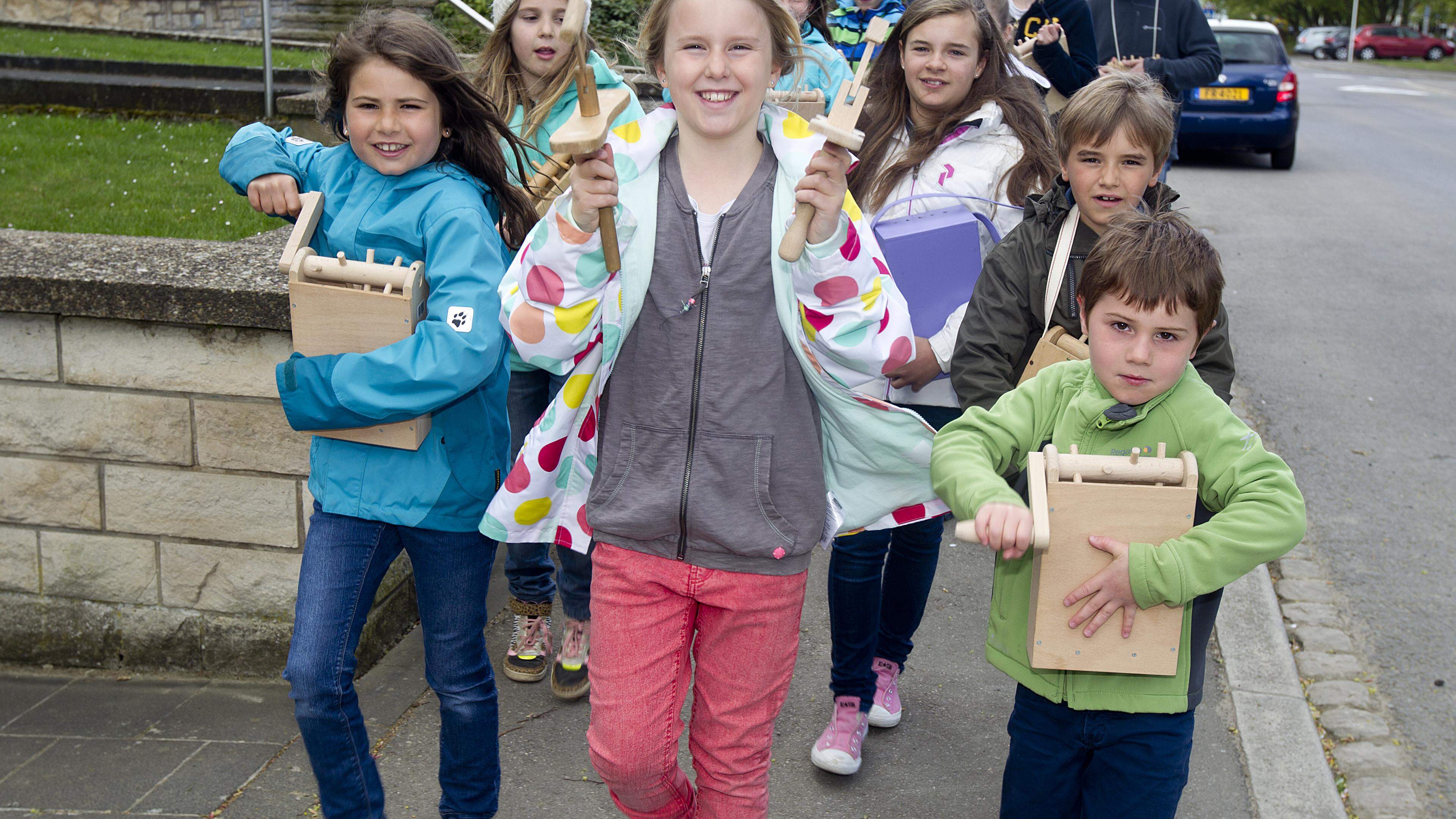With hashtags, the clibber is revived

As soon as the last bell sounds after the evening mass on Maundy Thursday, according to popular belief, her journey begins to the « confession » in Rome. But the silence does not stay long: the next morning clatter and call through the alleys. Children with wooden boxes, the « Klibberen », move from house to house and thus replace the silent church bells.
When the church bells « fly » to Rome
Even if the custom has lost visibility, with the exception of the south, photos of clibber actions are regularly shared online, says Tanja Konsbrück from the « Lëtzebuerger Massendénger ». Depending on the region, however, the process varies greatly: While some groups – as before – are traveling with their rattles in the morning, at noon and in the evening, others only move through the streets once a day.
Despite the variations, the clibber remains an important part of the village life. « The church bells give the daily rhythm to the village residents, » explains Konsbrück. « Whether you love them or find them annoying, the rattling gives this feeling of orientation despite the lack of bells. »
For us, Klibbern is part of Maundy Thursday, like the Péckvillchen for Easter Monday.
Tanja Konsbrück
Head of the Lëtzebuerger Massendénger
From the measurement service to the village event for everyone
The tradition has developed over the years. Where there used to be mainly altar servers, girls and boys take part today. « And that’s a good thing – you can no longer count on boys alone, we have almost more girls, » says Konsbrück. Children from families without a church relationship or with a migration background also integrate into the village community via the clibber. « A family who only moved to our village two or three years ago is now participating. »
Before Easter, an old tradition lives up again in many places
The village trains are usually organized through the church, but participation is open to everyone. Even those who do not have their own rattles can participate: « Last year we made an action with the carpenter of the correctional facility, which has produced many instruments. Most of them have now been sold, but interested parties should still report so that we can estimate the demand. »
Archives, museums and Facebook?
With the decline in religious life, many Christian Easter customs such as the clibber are under pressure. The « Lëtzebuerger Massendénger » were all the more happy when the custom was included in the national list of intangible cultural heritage.
Nevertheless, tradition not only lives from the archive, but above all from doing. « We have been using social media for some time to make the custom visible, » explains Konsbrück. Hashtags not only help document your own action, but also to observe what happens where. « This often sends us photos from the participating villages, or shared calls on Facebook. » Cultural institutes also do important work here: the rural museum « Thillenvogtei » in Rindschleiden offers, for example Easter workshopsIn which children are brought closer to old Easter customs such as Klibbern and singing.
Ultimately, however, it is the people themselves who keep the custom alive. It is often former Klibber children who take over the organization today. So also Konsbrück: As a child, she was traveling with the wooden box herself, now she has coordinated the clibber in Luxembourg for around 30 years. In doing so, she documents songs, terms and newspaper articles and carefully picks them up digitally.








